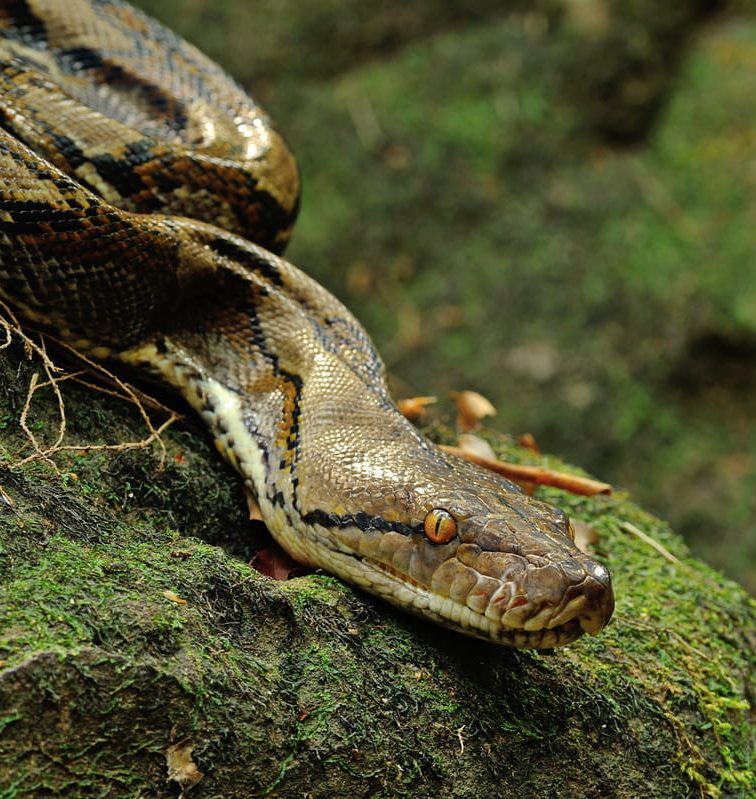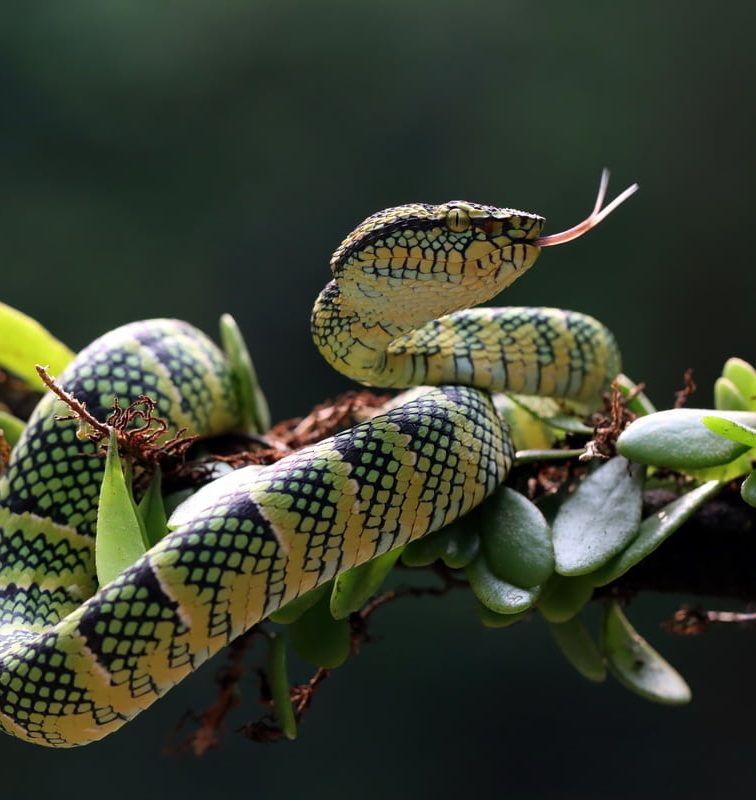Ball pythons (Python regius) are not just any reptile; they’re a study in evolutionary success. Native to sub-Saharan Africa, these constrictors can live up to 30 years in captivity, a testament to their resilience. Known for their distinctive defense mechanism of rolling into a ball, they’re a pet favorite and a biological curiosity.
From their humidity-dependent shedding to their role in African folklore, ball pythons are a bundle of surprises packed into a compact, calm creature. Dive in as we explore 25 fun facts about ball pythons, shedding light on their unique behaviors and the science behind their survival.
1. Natural Hide-and-Seekers: Ball Pythons’ Camouflage
The ball python’s skin is more than just scales; it’s an evolutionary canvas that has developed over thousands of years. With patterns unique to each individual, these snakes can become nearly invisible in their environment, a trait essential to their survival. It’s not merely their appearance that’s fascinating but the science behind it—each pattern is a result of genetic variations that provide a survival advantage in the wild.
Their camouflage not only helps them avoid predators but also aids in hunting. Research shows that their coloration can determine their hunting success, with certain patterns being more effective in different environments. This biological marvel is a result of their adaptability to the diverse African landscapes.
2. Calm Serpents: The Docile Nature of Ball Pythons
Ball pythons are often noted for their docile temperament, a trait that has made them particularly popular in the pet trade. Studies have suggested that their calm behavior could be attributed to a lack of natural predators in their native habitats, which has led to a less aggressive disposition.
This serenity is not just a benefit for pet owners but also an interesting point of study for herpetologists. Unlike many wild animals that become stressed in captivity, ball pythons typically adapt well to a captive environment, showing little sign of the stress behaviors that can be common in other species. This adaptability has made them a focal point for studies on reptile behavior and stress.
3. Survival Without Water: Ball Pythons’ Hydration Tactics
In the variable climates of sub-Saharan Africa, ball pythons exhibit remarkable hydration tactics. They can absorb moisture from the prey they consume, an adaptation that’s vital for survival during the dry season when water is scarce. This efficient use of resources reflects in their ability to thrive in environments that would be challenging for other species.
Researchers have noted that ball pythons can maintain hydration levels for longer than many other animals by minimizing water loss through their skin—a trait that is particularly advantageous given the arid conditions of their natural habitat.
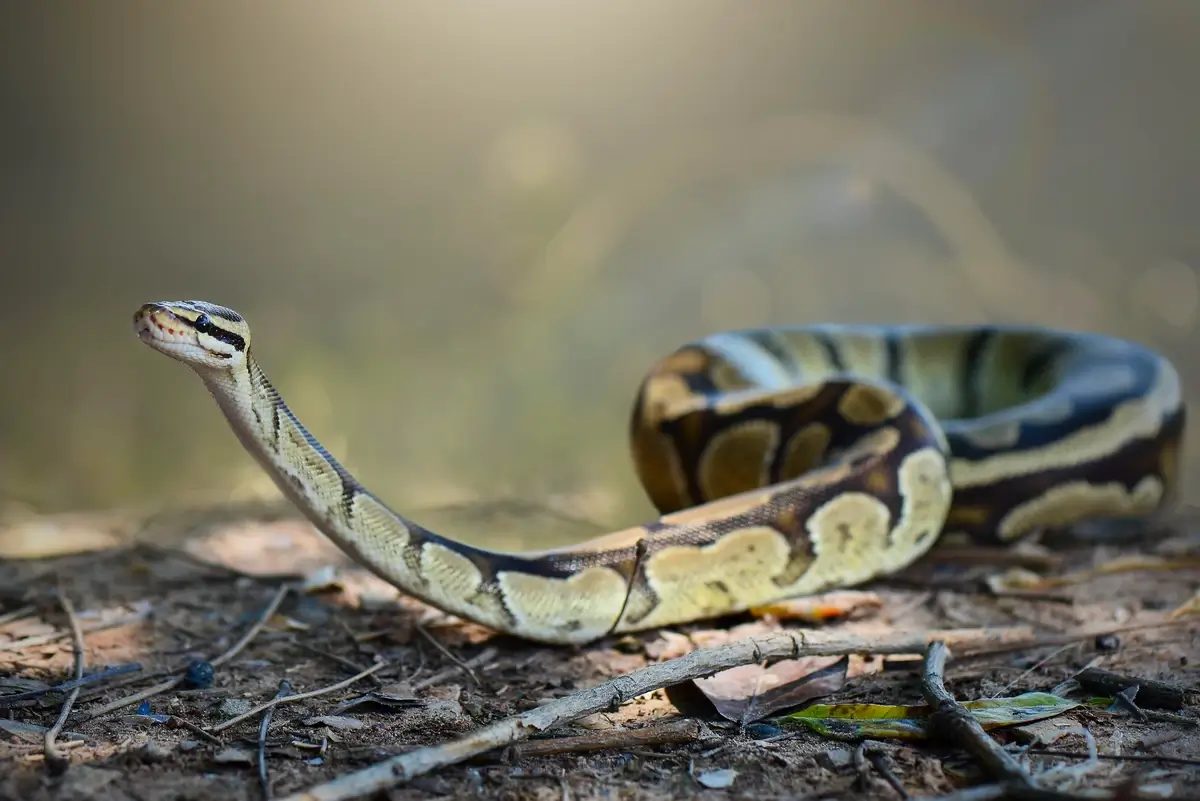
Image: impressivenature.com
4. The Ball Python Lifespan: A Testament to Their Care
Ball pythons are renowned for their longevity, especially in captivity where they can live for 20 to 30 years with proper care. This extended lifespan is a relatively recent phenomenon, aligning with better understanding and enhancements in reptile husbandry. In the wild, however, their lifespan averages around 10 years, demonstrating the impact of environmental pressures and predation.
The key to their longevity in captivity lies in a diet rich in necessary nutrients, controlled temperatures, and regular veterinary care—factors that mimic their natural habitat while minimizing stress and disease. Their resilience and longevity have made them a subject of interest for gerontological studies within herpetology.
5. Unique Patterns: The Aesthetic Diversity of Ball Pythons
Each ball python is a unique piece of living art, with patterns that are as varied as they are intricate. These patterns aren’t just for show; they’re a result of genetic diversity that provides advantages in camouflage and thermoregulation. Breeders have capitalized on this, selectively breeding for patterns and colors that are striking and sometimes rare, resulting in morphs like the ‘Spider’ and ‘Piebald’.
Scientifically, the aesthetic diversity of ball pythons is a prime example of the species’ genetic variability, which has implications for their survival and adaptability. It also raises important questions in conservation biology about the value and risks of selective breeding.
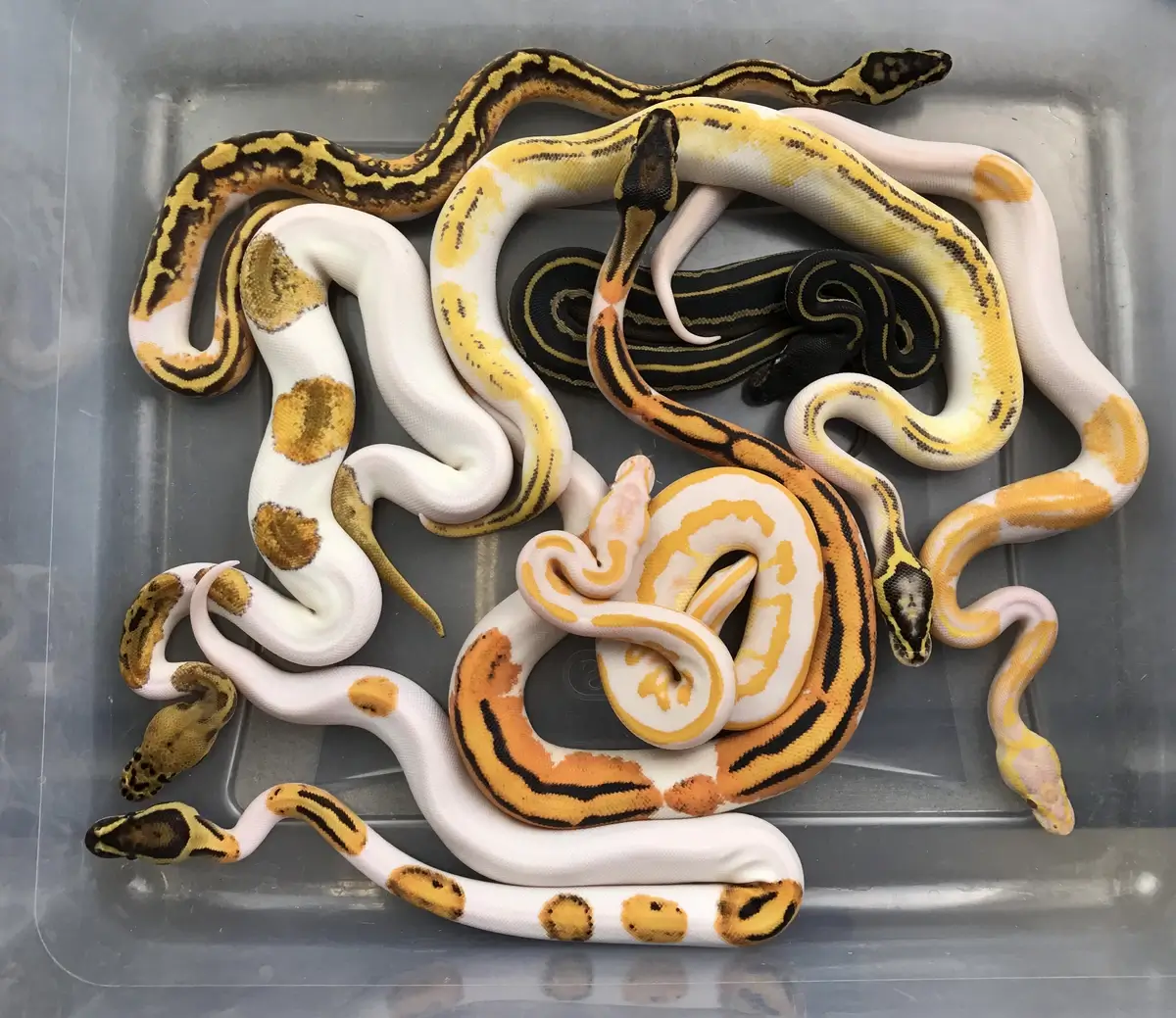
Image: kinovareptiles.com
6. Thermoregulation: How Ball Pythons Manage Their Temperature
Ball pythons, like all reptiles, are ectothermic, relying on their environment to regulate their body temperature. They bask in the sun to warm up and seek shade or burrow into the ground to cool down. This behavior is essential for digestion, metabolism, and overall health.
In captivity, providing a temperature gradient within their enclosure is crucial. It allows them to thermoregulate effectively, as studies have shown that improper temperature management can lead to health issues in ball pythons. Temperature regulation is also critical for successful breeding, as it can affect the development of embryos and the timing of breeding cycles.
7. The Ball Python Diet: A Carnivore’s Menu
The diet of a ball python in the wild consists primarily of small mammals and birds. They employ constriction to subdue their prey—a method that is both efficient and ensures the safety of the snake. In captivity, their diet is typically simplified to pre-killed or frozen-thawed rodents, which provides all the necessary nutrition without the risks of live feeding.
Nutritional research has shown that the frequency and size of meals are important factors in maintaining the health of captive ball pythons. Too much variation from their natural diet can lead to obesity and other health problems, highlighting the importance of a balanced and species-appropriate feeding regimen.
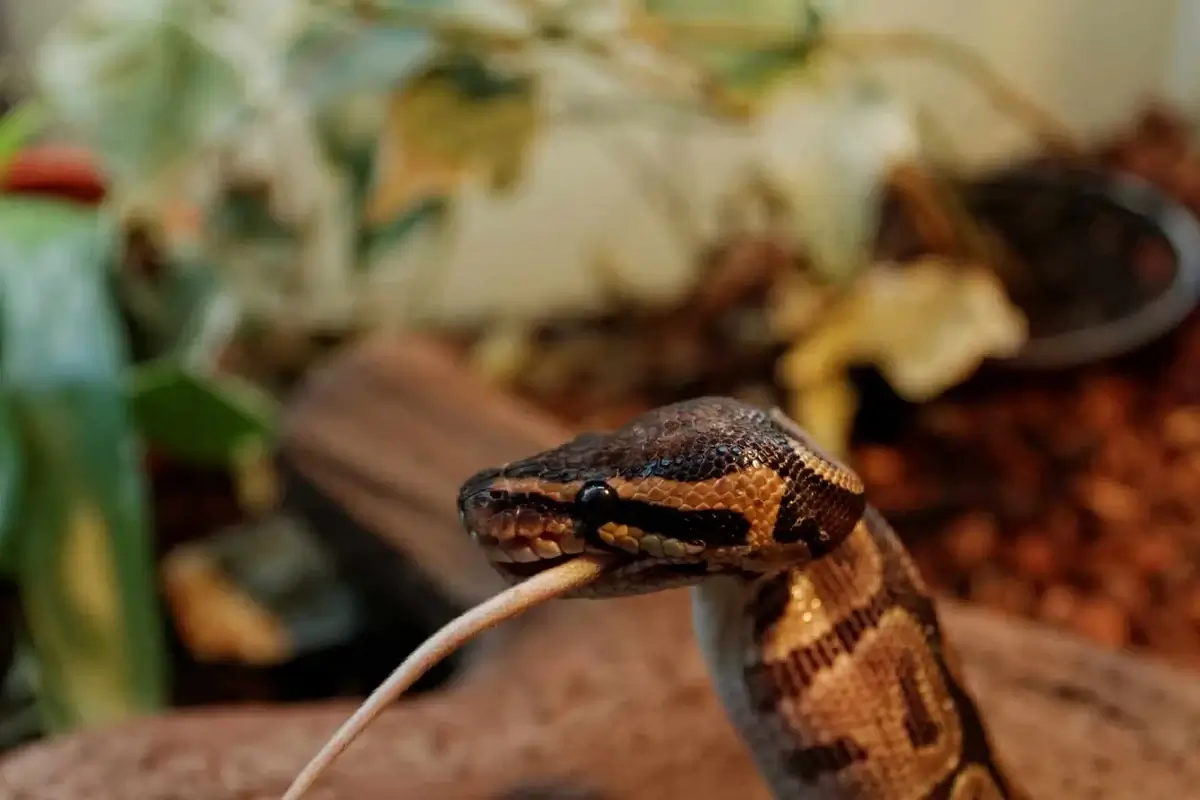
Image: terrariumquest.com
8. Reproduction Rituals: The Breeding Habits of Ball Pythons
Ball pythons have a fascinating reproductive strategy that is marked by a seasonal breeding cycle. Typically, mating occurs in the winter months, with females laying clutches of three to eleven eggs. During this time, males can become more aggressive as they compete for the attention of females, performing a variety of ritualistic behaviors, such as ‘combat dances’ with rival males.
Once the eggs are laid, female ball pythons exhibit an unusual trait among snakes: they coil around the eggs, providing warmth and protection until they hatch. This maternal care, which includes shivering motions to generate heat, ensures the eggs maintain a constant temperature, crucial for the development of the embryos inside.
9. Shedding Skin: The Rejuvenation of Ball Pythons
Shedding, or ecdysis, is a critical process for ball pythons, allowing them to grow and to remove parasites. This process can occur several times a year and is influenced by factors such as diet, growth rate, and environmental conditions. During shedding, ball pythons may exhibit changes in color and behavior, often becoming more reclusive and occasionally irritable.
The shedding process starts with the skin loosening around the mouth and progressing towards the tail. The old skin is typically removed in one piece, revealing a vibrant and often more vividly patterned new layer beneath. Proper humidity levels are vital during this time to ensure a complete and healthy shed.
10. Maternal Instincts: Ball Python’s Nesting Behaviors
In the realm of snakes, ball pythons are noteworthy for their maternal instincts. After laying eggs, females engage in a two-month incubation period, where they not only protect the eggs but also provide necessary warmth through muscular contractions. Unlike many reptiles that abandon their eggs post-laying, ball pythons are attentive mothers, rarely leaving the nest and foregoing food to maintain constant vigilance and temperature regulation.
This behavior is one of the many wonders of ball python reproduction, showcasing a level of parental investment that is quite rare among snakes. The females’ commitment ensures the eggs are shielded from predators and environmental extremes, increasing the chances of hatchling survival.
11. Nocturnal by Nature: The Night Life of Ball Pythons
Ball pythons are primarily nocturnal, coming to life after dusk when the African savannah cools. The night offers safety and cover, allowing them to hunt without the threat of diurnal predators. Their nocturnal nature is also an adaptation to the hot daytime temperatures of their native habitat.
During the night, ball pythons are active and alert, relying on their heat-sensitive pits to detect prey in the darkness. Their eyes, though not as sharp as some predators, are adapted to pick up subtle movements in low light. This nocturnal lifestyle is also thought to help conserve water and energy, as cooler night temperatures reduce the need for thermoregulation.
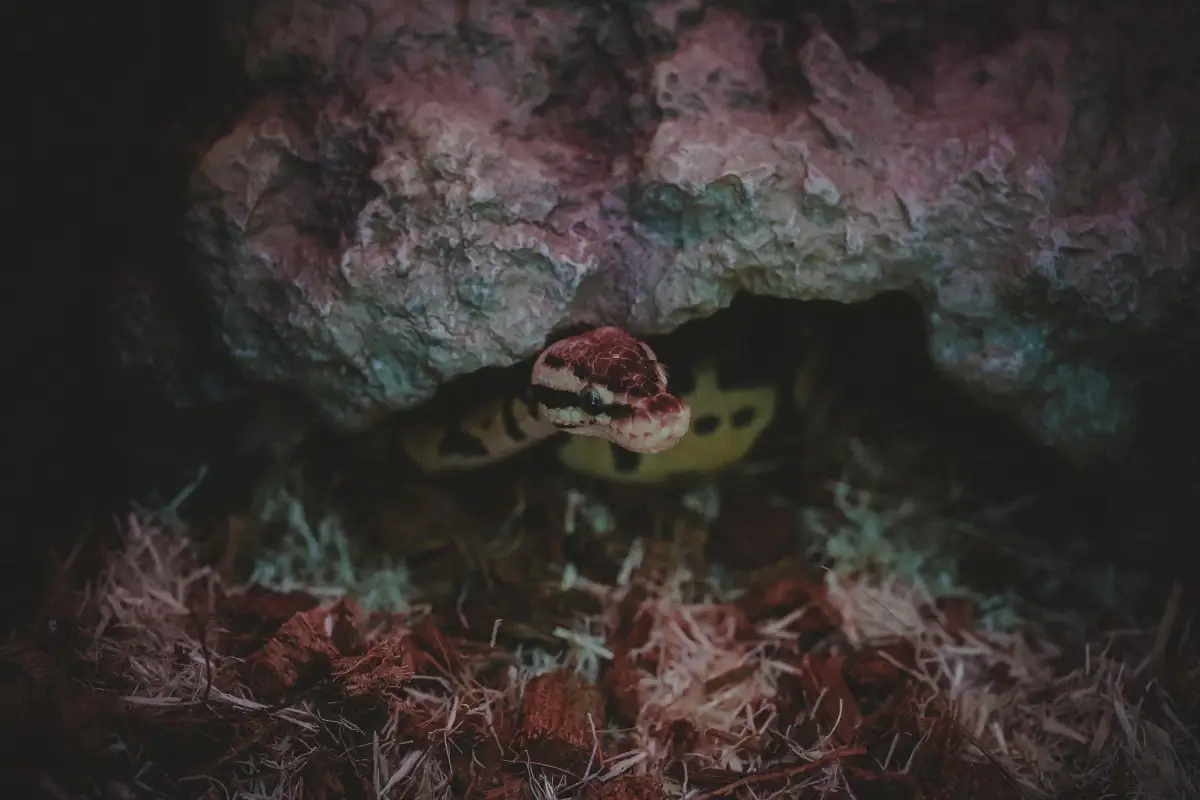
Image: pethelpful.com
12. Hatchling Development: Growth of Ball Pythons from Birth
From the moment they emerge from their eggs, ball python hatchlings are on a fast track to growth. These miniatures of their adult counterparts are born fully formed and independent, with instinctual behaviors that allow them to survive without any parental assistance. Initially measuring a mere 10 inches in length, these hatchlings can double in size within their first year through a diet of small rodents.
Growth rates in ball pythons are heavily dependent on nutrition, temperature, and overall health. Regular shedding during this phase indicates healthy development. By closely monitoring these signs, herpetologists can learn a great deal about the optimal conditions for raising these animals both in the wild and in captivity.
13. The Climbing Skills of Ball Pythons: Arboreal Adaptations
Despite being primarily ground-dwellers, ball pythons possess notable climbing abilities. Their muscular bodies and prehensile tails allow them to navigate low branches and shrubbery with surprising agility. This arboreal adaptation provides them with a vantage point for hunting and escape from ground-based threats.
In their juvenile stages, ball pythons are more inclined to climb, a behavior that decreases as they gain mass and size with age. Observing these climbing habits offers insights into their predatory strategies and escape mechanisms, which play a crucial role in their survival both in the wild and in more complex captive environments.

Image: newsweek.com
14. Ball Python’s Sense of Smell: A Tongue that Tells Tales
Ball pythons have an extraordinary sense of smell, which they use to navigate their environment and locate prey. Unlike humans, they ‘smell’ with their tongue, flicking it out to capture scent particles from the air. These particles are then transferred to the Jacobson’s organ in the mouth, which interprets the chemical signals.
This olfactory prowess is crucial for hunting, particularly given their nocturnal lifestyle. The tongue’s sensitivity to scent trails allows them to track prey with precision, an ability that is finely tuned from a young age. Understanding this sensory system has been vital for scientists studying reptilian behavior and sensory adaptation.
15. Fasting Phases: The Feeding Peculiarities of Ball Pythons
Ball pythons are known for their peculiar feeding habits, which include periodic fasting phases that can last several weeks to months. These fasts are not harmful and are often part of their natural cycle, particularly in males during the breeding season. The reasons for fasting can vary from changes in temperature, stress, or the availability of prey.
Understanding these fasting periods is essential for proper care in captivity, ensuring that keepers do not mistake a natural fast for illness. Research into these fasting cycles also provides valuable information on the metabolic adaptations of ball pythons, revealing their ability to conserve energy when necessary.
16. A Ball Python’s Home Range: Understanding Their Territory
Ball pythons have a specific home range that they occupy in the wild, which can vary in size but is often limited to a few square kilometers. This territory provides them with access to shelter, food, and potential mates. Research using radio telemetry has shown that while they do not defend this territory aggressively, they exhibit strong site fidelity, often returning to the same hiding spots regularly.
Understanding the size and nature of a ball python’s territory is crucial for conservation efforts, as habitat loss can directly affect their survival rates. In captivity, providing an environment that simulates aspects of their natural territory can contribute to their physical and psychological well-being.
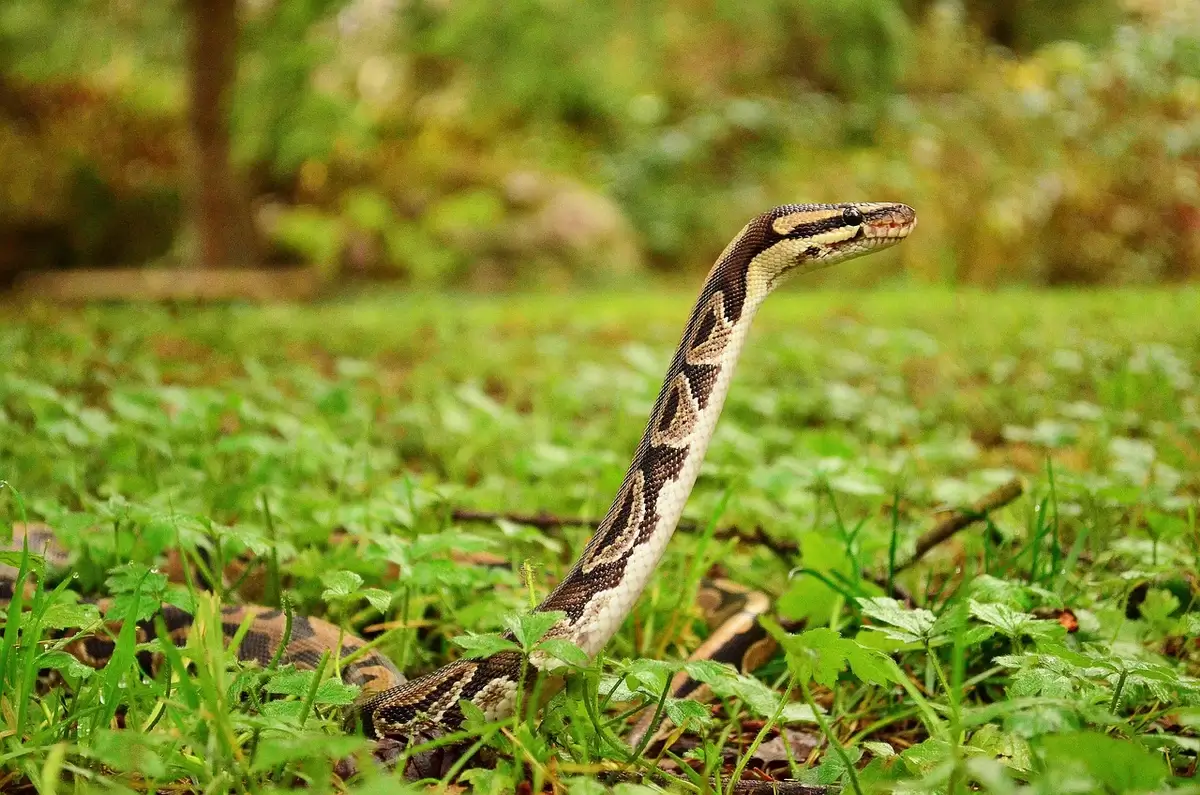
Image: pixabay.com
17. The Role of Humidity: Ball Pythons and Their Environment
Humidity plays a critical role in the life of a ball python. In their native habitat, they experience a range of humidity levels, which they have adapted to over time. Adequate humidity is vital for their shedding process and overall health, helping them to avoid respiratory issues and other ailments.
In captivity, maintaining the correct humidity levels is one of the most important aspects of care. It can be challenging, especially in environments that naturally have low humidity. Advanced husbandry techniques have allowed keepers to create micro-habitats with appropriate humidity levels, ensuring the health and longevity of these snakes.
18. The Gentle Constrictors: How Ball Pythons Hunt
Ball pythons are known as gentle constrictors because of their method of subduing prey. They employ constriction not as a brutal force, but as a precise and calculated technique that minimizes struggle and potential injury. The python targets its prey, striking quickly, then coils around it, applying pressure just enough to cease the prey’s breathing.
This method is incredibly efficient, allowing the python to conserve energy. The act of constriction is an interesting study in the physics of predation and has been the subject of much scientific interest, revealing the sophistication of these reptiles’ hunting techniques.

Image: jkrballstreetjournal.com
19. Climate Change Effects: Ball Pythons’ Response to Global Warming
As global temperatures rise, ball pythons, like many other species, are facing new challenges. Researchers are examining how shifting climate patterns affect their behavior, particularly their breeding and feeding habits.
Preliminary studies suggest that higher temperatures could influence the gender ratios of hatchlings due to their temperature-dependent sex determination, potentially skewing populations. Additionally, changes in precipitation and humidity may alter their shedding cycles and susceptibility to various diseases.
20. The Origin of the Name: Why ‘Ball’ Python?
The ‘ball’ in ball python refers to their unique defensive behavior. When threatened, these snakes coil tightly into a ball, tucking their heads inside their coils. This name can be traced back to their first interactions with Westerners, and it highlights the snake’s non-aggressive defense mechanism. Interestingly, not all cultures refer to them this way. In their homeland, they’re often called ‘royal pythons,’ a name that is believed to have roots in the fact that African rulers once wore the snakes as jewelry to signify their status.
The historical context of these names reflects not only the snake’s behavior but also the interplay between different cultures and the natural world. The term ‘ball python’ was first popularized in the pet trade in the 1990s when these snakes became more widely available and appreciated for their compact size and placid nature.
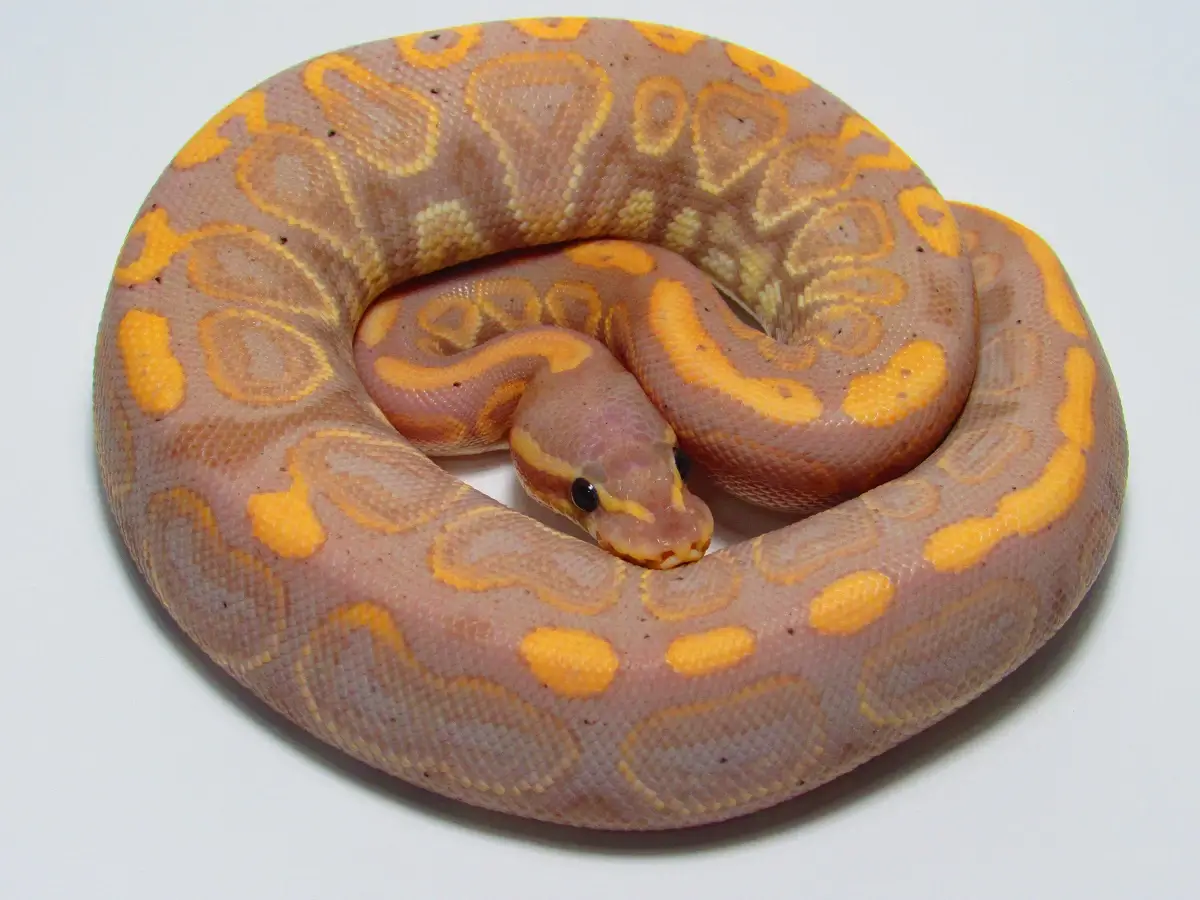
Image: worldofballpythons.com
21. Conservation Status: Protecting the Ball Python
Ball pythons are currently listed as ‘Least Concern’ by the IUCN Red List, but this does not mean they are without threats. Habitat destruction and the pet trade have impacted their populations in the wild. Conservationists emphasize the need for sustainable practices in the pet trade, advocating for captive breeding to prevent over-collection from their natural habitats.
Recent figures show thousands of ball pythons are exported annually from Africa for the pet trade, raising concerns about the sustainability of this practice. In response, some countries have begun implementing stricter export regulations. The data collected by conservation organizations is crucial for monitoring wild populations and ensuring that the trade does not threaten the species’ survival.
22. Ball Pythons as Pets: What to Expect
When considering ball pythons as pets, it’s important to understand what’s involved in their care. These snakes are known for their hardiness and can make great pets for beginners due to their generally docile nature. However, potential owners should be prepared for a long-term commitment, as ball pythons can live for over 20 years with proper care.
Prospective owners should also be aware of the specific needs of these snakes, including temperature gradients, appropriate humidity, and dietary requirements. The popularity of ball pythons has led to a wealth of resources and care guides, which are essential reading for anyone looking to bring a ball python into their home.
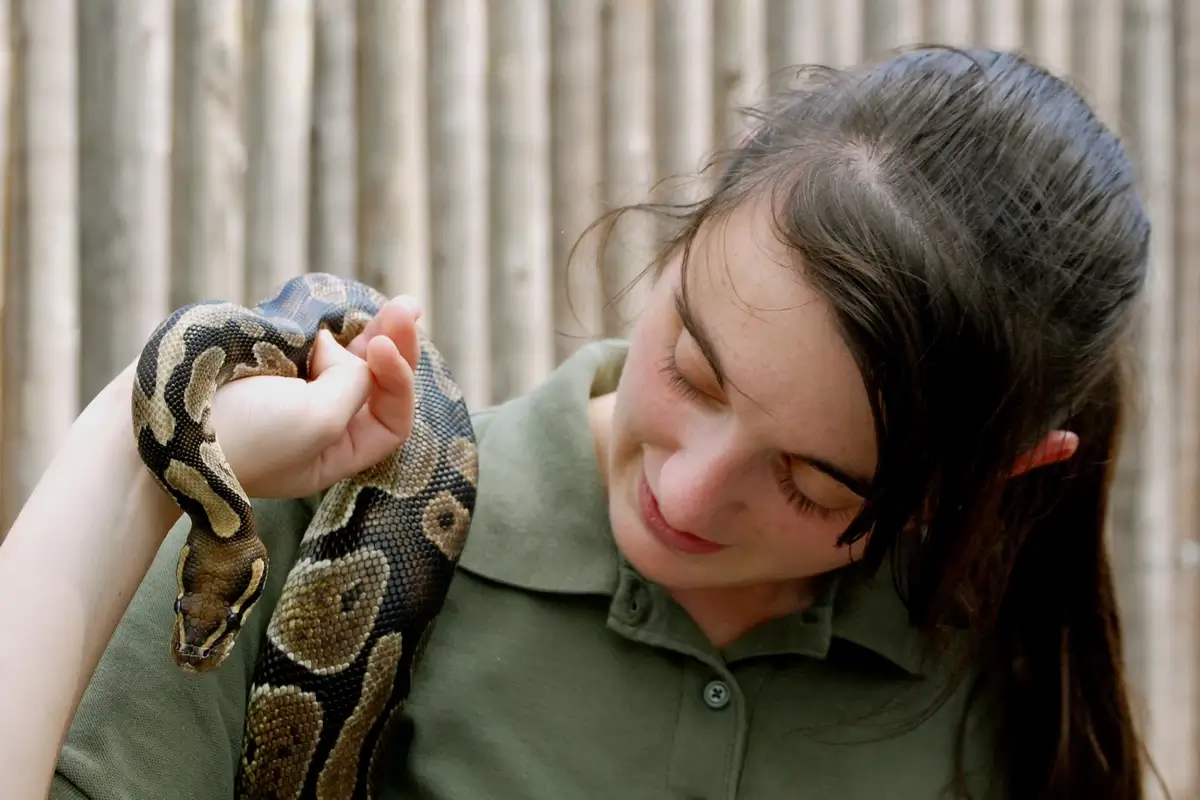
Charles Barilleaux / Flickr
23. Temperature-Dependent Sex Determination in Ball Pythons
A fascinating aspect of ball python biology is their temperature-dependent sex determination. The sex of the hatchlings is not determined by sex chromosomes, as in mammals, but by the incubation temperature of the eggs. Research indicates that higher temperatures tend to produce more females, while lower temperatures result in more males.
This reproductive strategy has significant implications for captive breeding programs. It allows breeders to influence the sex ratio of their hatchlings, which can be important for maintaining genetic diversity and for the pet trade. Studies are ongoing to refine our understanding of the exact mechanisms and optimal conditions for this process.
24. Ball Pythons in Folklore: Cultural Significance
Ball pythons hold a place of reverence and cultural significance in many African societies. For instance, in the Dahomey Kingdom, now part of modern-day Benin, the royal python was considered sacred and associated with royalty and the divine. Killing a royal python was taboo and required a ritual of apology to avert misfortune. The snake’s perceived wisdom and power are encapsulated in folklore across various West African cultures, where they are often seen as conduits between the spiritual and physical worlds.
These cultural perspectives have contributed to the conservation of the species in certain areas, where locals may protect them due to their traditional beliefs. The ball python’s presence in folklore underscores the importance of cultural heritage in wildlife conservation and biodiversity.
25. Ball Pythons and Ecosystem Roles: Environmental Indicators
Ball pythons serve as bioindicators in their ecosystems, reflecting environmental health. Predominantly rodent hunters, they maintain ecological balance by controlling these populations, which if unchecked, can cause crop damage and spread disease. Conversely, their numbers offer insight into predator abundance and habitat stability.
Disturbances in their numbers often signal broader ecological shifts, such as habitat fragmentation or climate change effects. Ecological studies emphasize the python’s role in biodiversity, with their conservation increasingly linked to sustainable environmental practices.

Image: thebiodude.com
FAQ
How fast can a ball python move?
Ball pythons are not known for their speed. They move relatively slowly and deliberately. In the wild, they rely on stealth and camouflage rather than speed to catch their prey or avoid predators. When necessary, they can move with a surprising burst of speed, but over short distances. Typically, they would rather retreat and hide than try to escape a threat quickly.
Does ball python have teeth?
Yes, ball pythons do have teeth. They are equipped with small, hooked teeth that are designed to grasp and hold onto prey. Unlike some snake species, ball pythons do not have venomous fangs, but their teeth are sharp enough to aid in the constriction process when capturing prey.
Do ball pythons poop often?
Ball pythons do not poop often compared to many other animals. Their slow metabolism and the nature of their diet mean that they can go a significant amount of time between bowel movements, sometimes only defecating once every few weeks. The frequency can also depend on how much and how often they eat.
What makes a ball python unique?
Ball pythons are unique for several reasons. They are known for their docile temperament, making them popular pets. Their ability to curl into a tight ball when threatened is a distinctive defense mechanism, which is where they get their common name. They also have a diverse range of color and pattern morphs, and the fact that their sex can be determined by the incubation temperature of their eggs sets them apart from many other snake species.
Why do they call it a ball python?
They are called ball pythons because of their characteristic defensive behavior. When feeling threatened or stressed, ball pythons will curl up into a tight ball, tucking their head in the center. This behavior is especially pronounced in younger snakes and is used to protect themselves from predators.
Are ball pythons fun pets?
Ball pythons can be considered fun pets by reptile enthusiasts who enjoy their calm and manageable nature. They are known for being relatively easy to care for, and their docile disposition allows owners to handle them without much risk of aggression. Their wide variety of morphs also provides a fascinating aspect of collecting and breeding for enthusiasts.
What do ball pythons like?
Ball pythons like environments that mimic their natural habitat, with adequate heat, humidity, and hiding places. They enjoy having a secure and comfortable enclosure where they can retreat to feel safe. As for activities, they may show interest in exploring their surroundings when they feel secure. Ball pythons also like a consistent feeding routine with appropriate prey items for their size.






